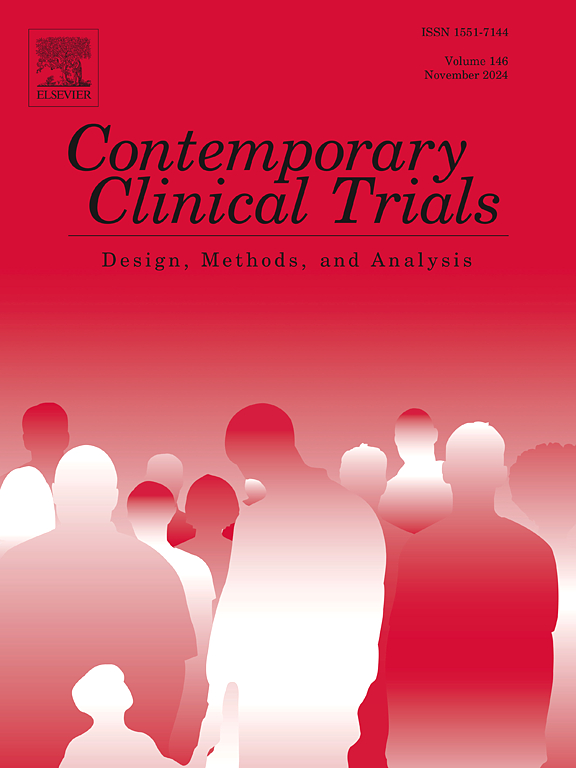Prostate Assessment using Comparative Interventions – Fast MRI and Image-fusion for Cancer (IP7-PACIFIC): A prospective, multi-centre, dual sequential randomised controlled trial
IF 1.9
3区 医学
Q3 MEDICINE, RESEARCH & EXPERIMENTAL
引用次数: 0
Abstract
Background
Multiparametric MRI (mpMRI) with contrast medium is recommended in the prostate cancer diagnostic pathway. It is unclear if MRI without contrast medium (biparametric [bp]) can be used instead whilst remaining sensitive to detection of clinically significant cancers. For those with a positive MRI, is image-fusion targeting better than visual-registration (cognitive) targeting in detecting clinically significant prostate cancer? And does bpMRI represent better value for money than mpMRI? A randomised controlled trial testing clinical utility and cost-effectiveness of these approaches is vital before changes in practice.
Methods
IP7-PACIFIC is a prospective, multicentre, co-enrolment trial with two randomisations and embedded economic evaluation. The first randomisation will evaluate non-inferiority of bpMRI compared to mpMRI in those with clinical suspicion of prostate cancer. Men with a suspicious MRI will undergo a second randomisation to evaluate if image-fusion targeting is superior to standard visual-registration targeted biopsy. Ethics committee approval has been granted by the London Bromley Research Ethics Committee.
Results
The primary objective for Randomisation 1 is to determine non-inferiority of bpMRI to detect Gleason score ≥ 7 [ISUP Grade Group ≥2] cancer compared to mpMRI. The objective for Randomisation 2 is to determine if image-fusion targeted biopsy is superior to visual-registration targeted biopsy. An internal pilot phase will enrol 700 patients; the overall recruitment target is 3600.
Discussion
IP7-PACIFIC aims to provide randomised comparative evidence for the clinical utility and cost-effectiveness of using bpMRI and image-fusion biopsy. The findings will inform guidelines. The sequential randomised co-enrolment design allows simultaneous evaluation of two research questions and avoids heterogeneity of trial populations. By contrast to previous paired-cohort studies, the randomised design will reduce reporter bias, providing the highest level of diagnostic evidence.
前列腺评估使用比较干预-快速MRI和图像融合癌症(IP7-PACIFIC):一项前瞻性,多中心,双顺序随机对照试验。
背景:多参数磁共振造影剂(mpMRI)被推荐用于前列腺癌的诊断途径。目前尚不清楚是否可以使用不含造影剂的MRI(双参数[bp]),同时对检测临床意义重大的癌症保持敏感。对于那些MRI阳性的患者,在检测临床意义的前列腺癌时,图像融合靶向比视觉配准(认知)靶向更好吗?bpMRI是否比mpMRI更物有所值?在实践改变之前,对这些方法的临床效用和成本效益进行随机对照试验至关重要。方法:IP7-PACIFIC是一项前瞻性、多中心、双随机联合入组试验,并进行了嵌入式经济评估。第一次随机化将评估bpMRI与mpMRI在临床怀疑前列腺癌患者中的非劣效性。有可疑MRI的男性将进行第二次随机化,以评估图像融合靶向是否优于标准视觉配准靶向活检。伦理委员会已批准由伦敦布罗姆利研究伦理委员会。结果:随机化1的主要目的是确定与mpMRI相比,bpMRI检测Gleason评分 ≥ 7 [ISUP分级组≥2]癌症的非劣效性。随机化2的目的是确定图像融合靶向活检是否优于视觉配准靶向活检。内部试点阶段将招募700名患者;总体招聘目标为3600人。讨论:IP7-PACIFIC旨在为使用bpMRI和图像融合活检的临床效用和成本效益提供随机比较证据。研究结果将为指导方针提供依据。顺序随机共入组设计允许同时评估两个研究问题,并避免试验人群的异质性。与之前的配对队列研究相比,随机设计将减少报告偏倚,提供最高水平的诊断证据。
本文章由计算机程序翻译,如有差异,请以英文原文为准。
求助全文
约1分钟内获得全文
求助全文
来源期刊
CiteScore
3.70
自引率
4.50%
发文量
281
审稿时长
44 days
期刊介绍:
Contemporary Clinical Trials is an international peer reviewed journal that publishes manuscripts pertaining to all aspects of clinical trials, including, but not limited to, design, conduct, analysis, regulation and ethics. Manuscripts submitted should appeal to a readership drawn from disciplines including medicine, biostatistics, epidemiology, computer science, management science, behavioural science, pharmaceutical science, and bioethics. Full-length papers and short communications not exceeding 1,500 words, as well as systemic reviews of clinical trials and methodologies will be published. Perspectives/commentaries on current issues and the impact of clinical trials on the practice of medicine and health policy are also welcome.

 求助内容:
求助内容: 应助结果提醒方式:
应助结果提醒方式:


